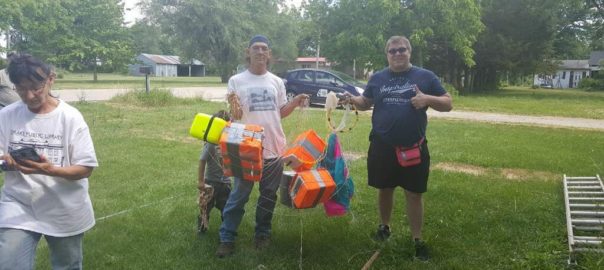Last week, we had the dry run for the Total Solar Eclipse in Grand Island. My former students who plan to participate in the Eclipse Ballooning project were unable to attend the dry run, so we decided to have a separate flight so they could test their experiments and get some baseline readings. All of these were reiterations or improvements from previous experiments.
Mike Leidy shows his enclosed camera heading platform working once the magnetometer was calibrated. He turned in a circle with the pod and the camera stayed pointing in the same direction. (Full disclosure: I said I would take a video of it working but I didn’t put my camera in the right mode so I just ended up taking a photo instead, but I swear it was working well.)

Fay Cardona started her CO2 sensor.

Josh Gebbie was taking light intensity and spectral measurements and then helped fill the balloon.

Emily Anderson confirmed the start of the radiation monitor and then helped as a balloon handler.

As did Fay.

And Mike.

With all of the sensing equipment, we were near our 12 pound maximum allotted weight for a weather balloon. We originally requested a T-cylinder of helium, but all the gas provider had at the time was one smaller K-cylinder and an even smaller G-cylinder. We put all of that gas in the balloon and the lift was not as much as we usually have. Therefore, the ascent was slower than predicted and we knew that the recovery team was in for a long drive.
See you in several hours!

This was the original prediction. It was expected to land about 100 miles to the east.
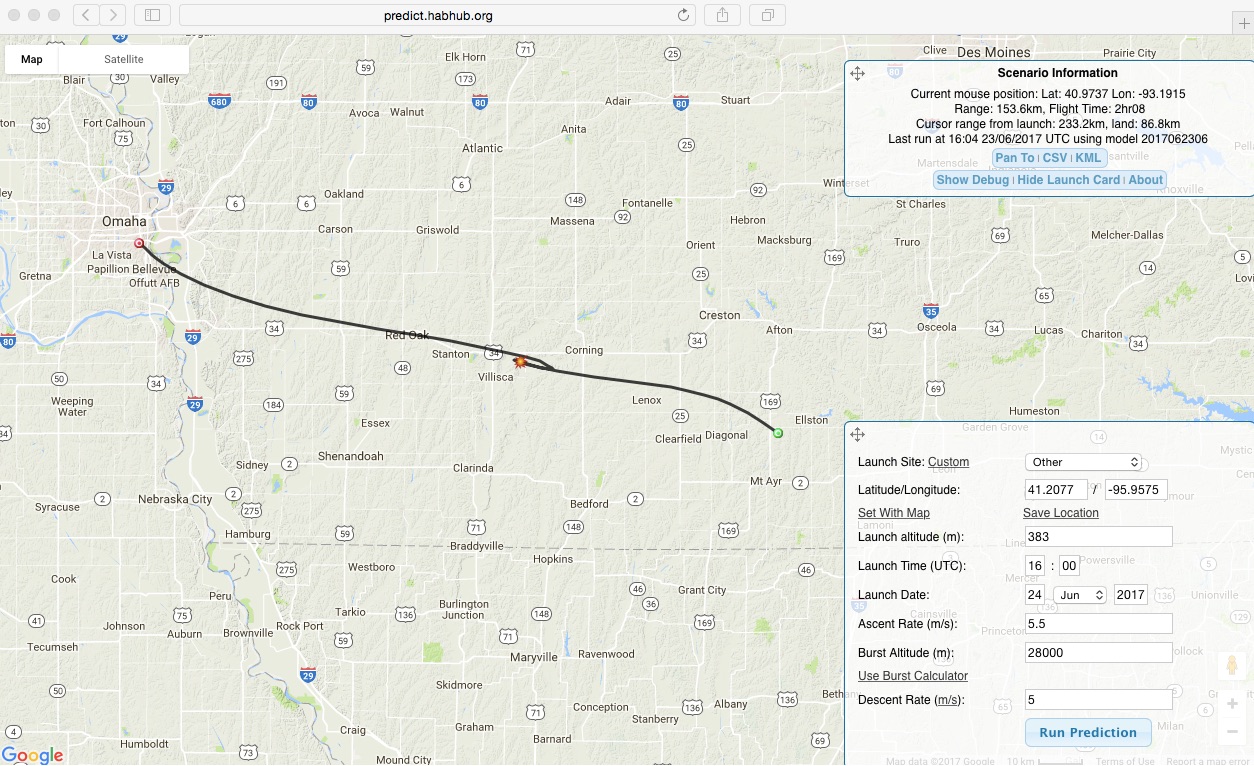
It ended up traveling 163 miles.
Because the student team will be chasing and recovering balloons on the day of the eclipse, we decided to let them practice as a team and Michael and I stayed in Omaha watching eagerly from our computers.
We could see the satellite map and coordinates when it landed. It looked to be in a very small town (Cincinnati, Iowa) on the corner of the roof of a house.

Here is what the recovery team found when they arrived. (Photos by Fay Cardona)

This was our first house landing and likely our longest range for a balloon flight and a long day of driving for our chase team.

Since the string of pods was draped over the edge of the roof of the house, they tried pulling them off, but one was snagged on a nail.
A nice man from the town offered to bring over a ladder so they could get it down.

Success!

Postmortem
The Amount of Lifting Gas
Next time, if we have the same weight of payloads, we will make sure to order 2 full K-cylinders of helium for each balloon.
Cameras
We sent up two new Go Pro Sessions cameras, one outside and one inside a pod to record measurements on a Quest 2 Vernier data collector of spectral data and intensity of light. Both cameras lasted about an hour before they ran out of battery. That means that we will need to look into additional battery life to ensure we get good footage of totality of the eclipse (exactly an hour after launch). These cameras can record in 4K resolution and the images are very nice. The video is very smooth looking from afar, but up close, you can see some small twitches in the movement. We think this is from the automatic motion reduction properties and we might want to try turning this off, because it makes the footage a little distracting.
Stockyards Building right after take-off. 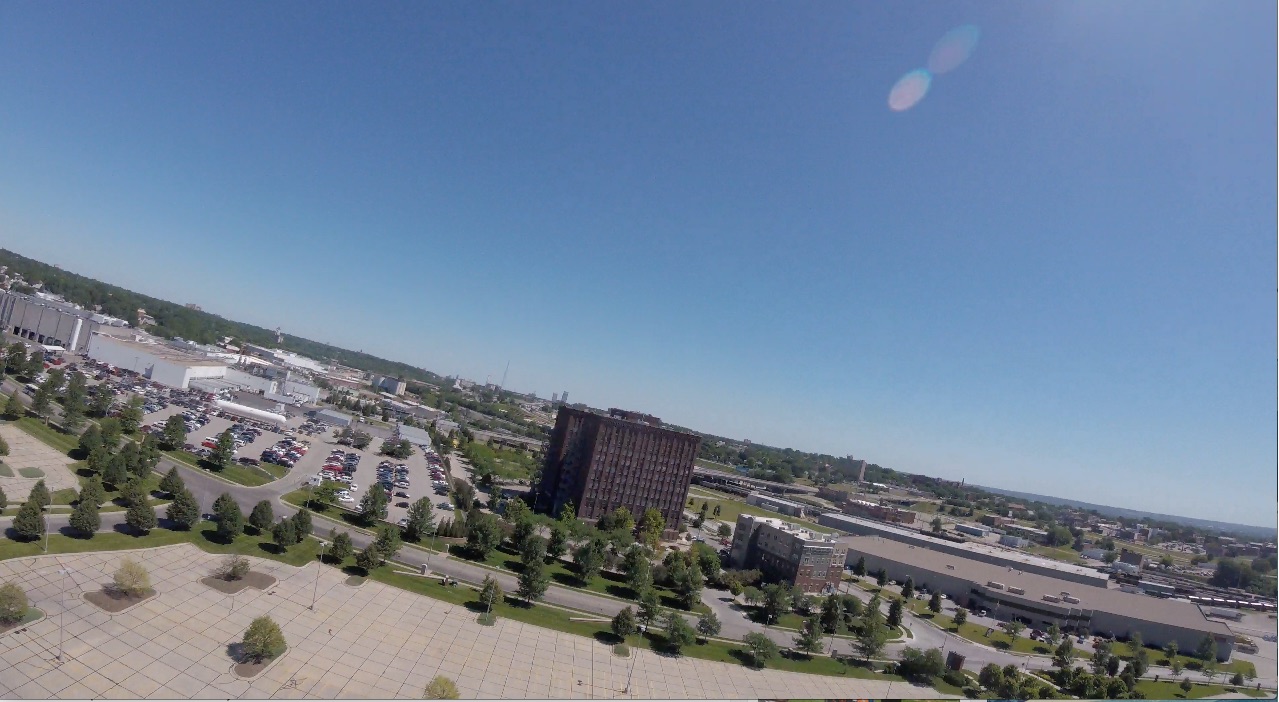
Lake Manawa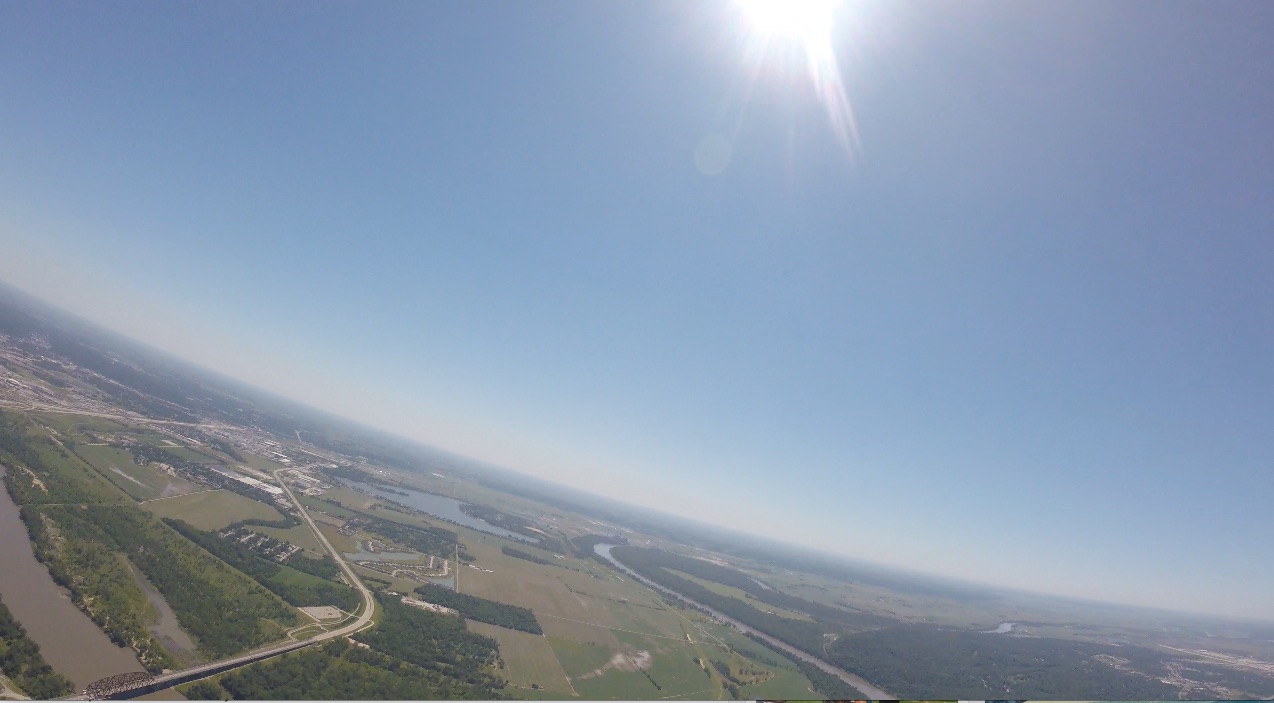
I exported this 15 second clip in 1080p so the file would be small enough to fit on the blog.
Our third camera was an older Go Pro Hero 2 with extra battery back in a case on the bottom of Mike’s camera heading platform. As you can see from the following photo, the camera is no longer there. That brass piece is left over from the adapter that attached the camera to the spindle. That means that the plastic of the connector piece broke off. So, we are disappointed that we do not have the video to show how well the device worked during the flight. The amazing thing is that the platform was still turning and working after the retrieved it from the roof. The camera has our contact information on it, so on the very slim chance that someone finds it, they can contact us to return it. Mike is considering putting a plastic dome over the camera next time so if the camera comes off, it will be contained.

CO2 Sensor
We are hopeful that the CO2 sensor took data throughout the flight. The battery was still running on this pod and the camera platform 4 hours after they were started. Unfortunately, there must have been some pretty violent movements, presumably during post-burst chaos, because the battery, which was attached by strong Velcro to the bottom of the Styrofoam pod, ripped a chunk of material out of the bottom. The circuit board from the sensor hit so hard it was embedded in the side of the wall of the container and the screen attached to the Raspberry Pi was detached and broken.

Spectra and Intensity Measurement
I had charged the Quest 2 data logger a couple nights before the launch. When we were setting up, it didn’t seem to have much of a charge so we plugged it into the vehicle to charge while we were getting ready. Although the Go Pro lasted an hour, the Quest 2 only lasted about 40 minutes before shutting itself off. With our very slow ascent, that would have only been to about 20,000 ft.
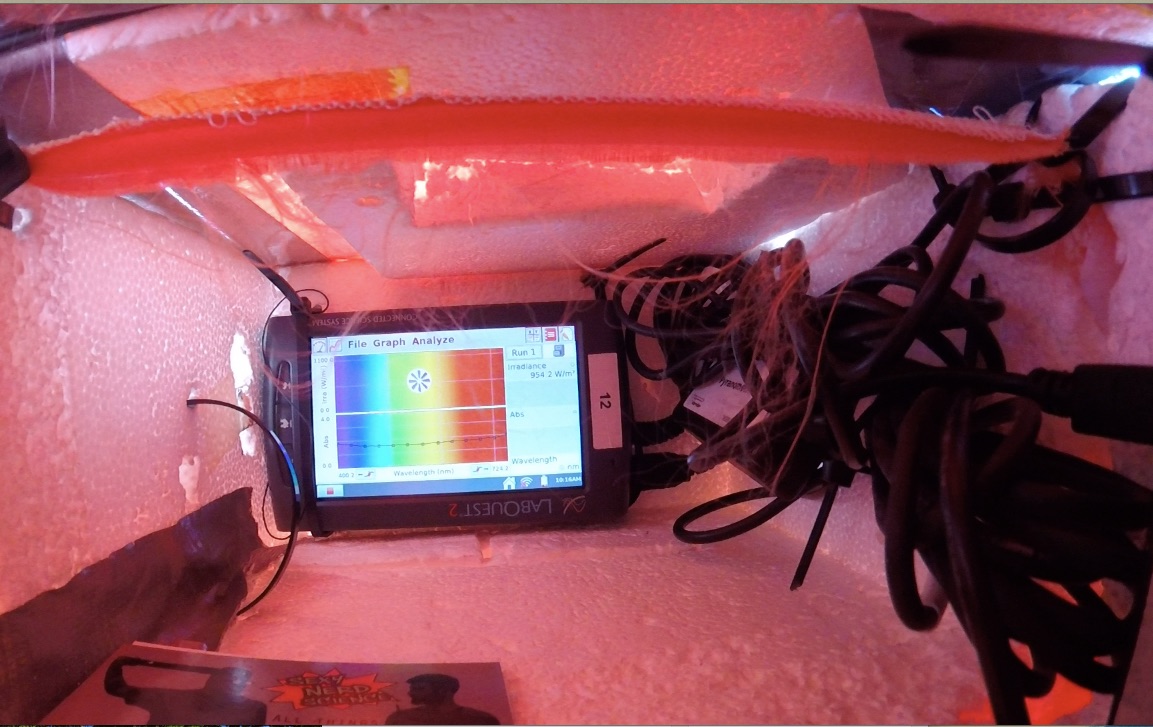
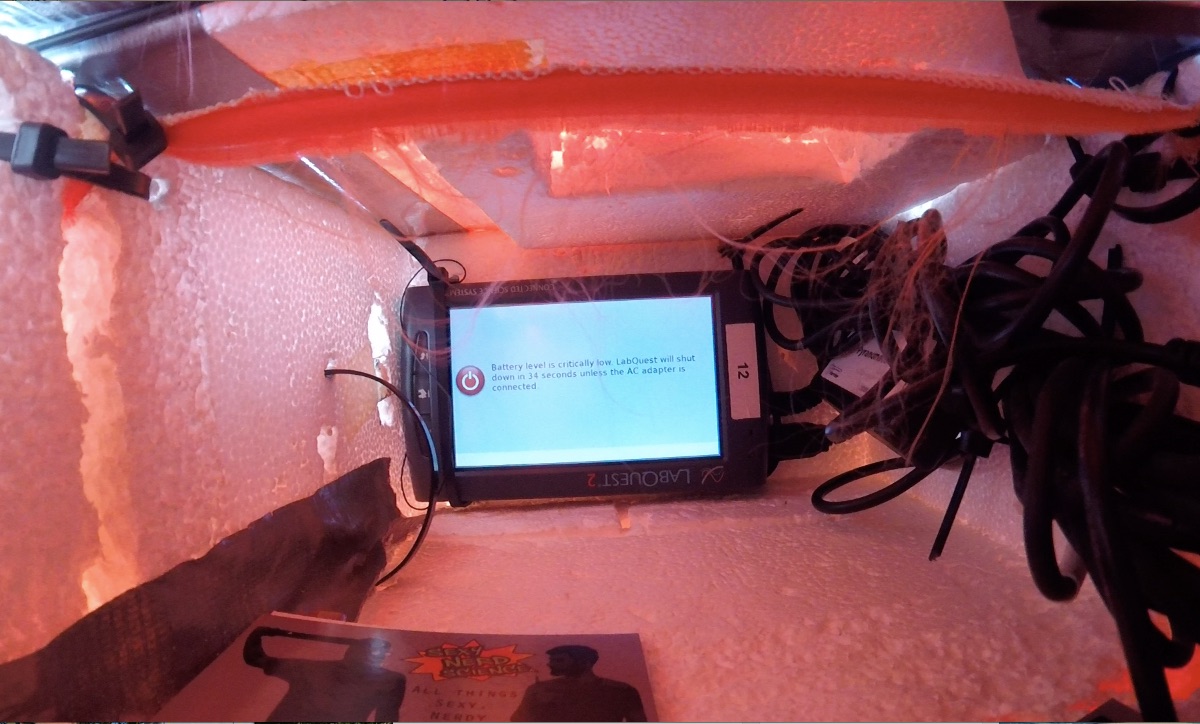
Cosmic Ray Measurement
We were able to test to make sure that the radiation monitor was working on the ground before the flight, but did not record data very often once it was in flight mode. We will have to look into the programming to see if this is a sampling issue or if the specialized sensor module for use with the radiation monitor is getting turned off with the new system.
Tracking
All of our tracking (SatCom, APRS, and SPOT) worked. There were just a few minor glitches that were confounding. The night before the flight, I put new batteries in the SPOT GPS and tried to test it on the app but it wasn’t working. I went to the website to check if the coordinates were there and it said it was going through maintenance. Luckily, it was functioning again by morning.
We were watching a live path on APRS through Google Earth. At one point, we thought the payloads separated because it was reading about 9000 ft. different than the SatCom at the same time. Then, they both kept going up. The following screen shot shows the odd separation between the two balloon measurements.
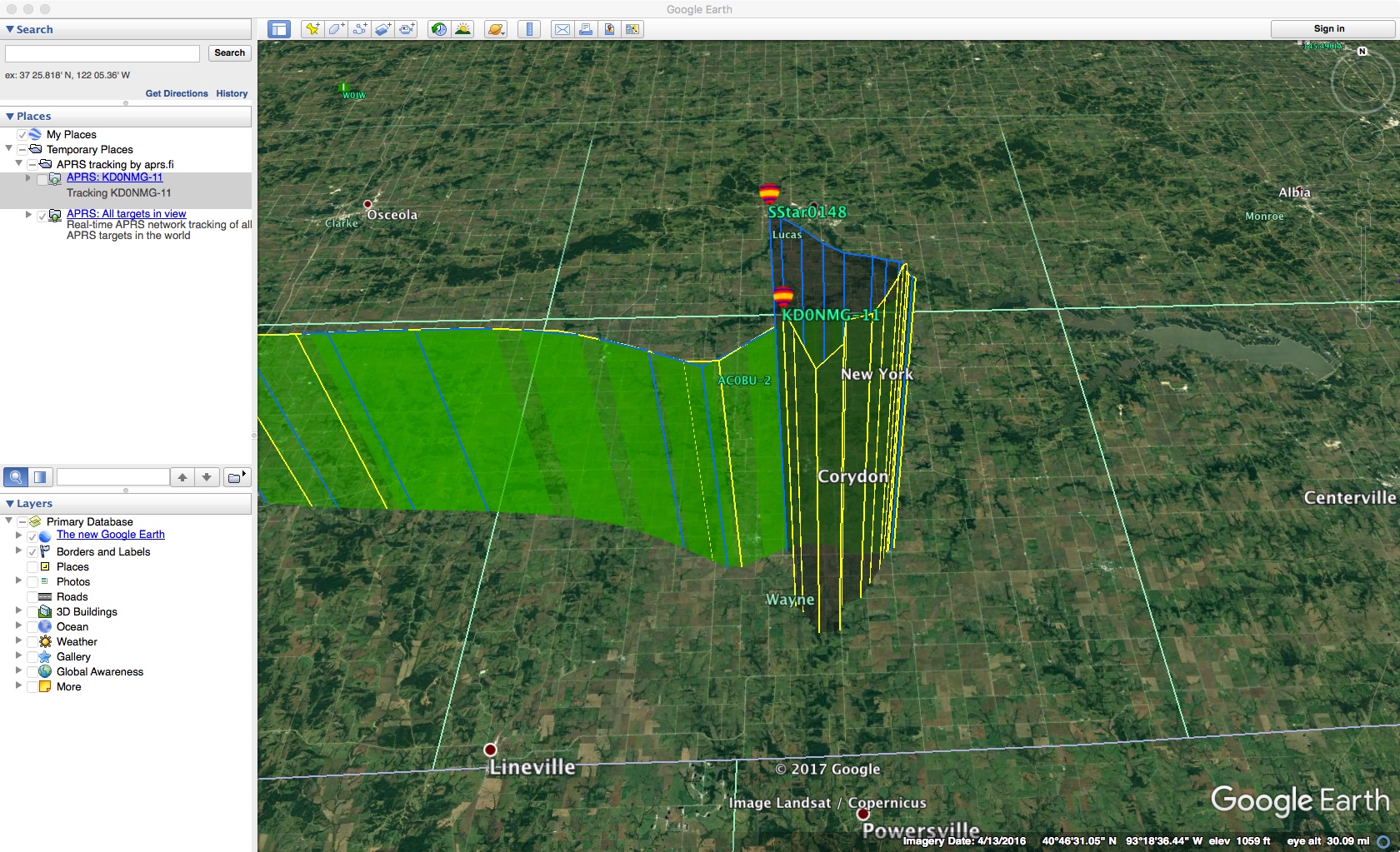
You can check out our flight data here: http://tracking.stratostar.net/#!/missions/594a9ae827cd4d0c00afbe12
Here is a graph of our altitude vs. time with a relatively constant (and slow) rate of ascent.
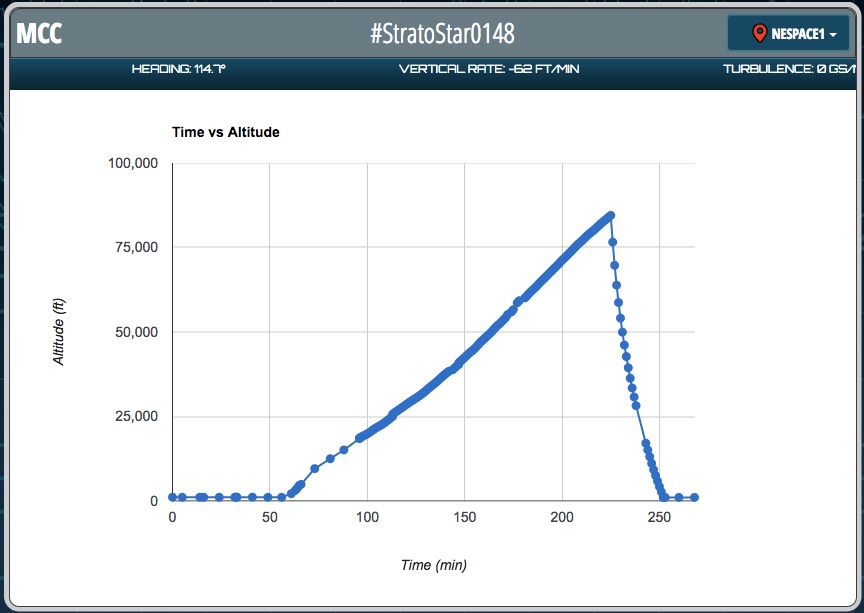
Preparation for Eclipse Day
We have some work yet to do to prepare for the experiment flights on Eclipse Day. Working on sensor readings, battery life, and some of our pods are looking a little worse for wear. Our APRS pod which has likely seen dozens of flights is likely beyond repair so we will need to assemble a new one.
This was the new time flying the blue and pink parachute and it was not untangling completely so it may need to be restrung.
We may not take CO2 data on the day of the eclipse because I do not foresee the chemistry of the atmosphere changing in the two and a half minutes of totality, so Fay may instead be in charge of the astrobiology experiment we will be facilitating from the NASA Ames Astrobiology group as that is an interest of hers.
